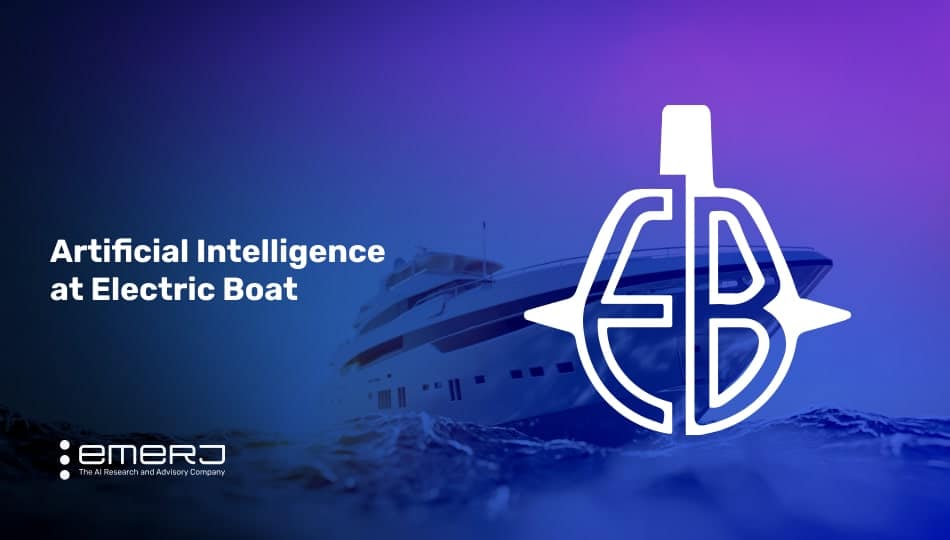
General Dynamics Electric Boat, a subsidiary of the General Dynamics Corporation founded in 1899, has set high standards in designing, building, and supporting submarines for the U.S. Navy. Its primary operations include a shipyard in Groton, CT, an automated hull-fabrication facility in Quonset Point, RI, and an engineering building in New London, CT. With over 14,000 employees, Electric Boat maintains a robust workforce dedicated to its mission of “designing, constructing, and providing life cycle support to the world’s finest submarines.”
A core strategic objective for Electric Boat for the next three years is to “employ state-of-the-art computer-aided tools” in their efforts towards modernization and to ultimately “increase value through operational excellence.” AI/ML is an integral part of these efforts. As of 2024, General Dynamics trades on the NYSE with a market cap of just over 79 billion. For the fiscal year ending on December 31, 2023, General Dynamics reported $24.6 billion in revenue, according to its Fiscal Year 2023 10-K.
This article will examine how Electric Boat is applying AI and ML technology to its business and manufacturing processes through one fully mature use case:
- Scheduling engine to streamline submarine construction: Generating a dynamic assembly schedule that adapts to real-time production changes and unexpected tasks, prioritizing efficiency by balancing resource capacities and manufacturing constraints.
We will also explore an AI initiative at Electric Boat currently under development:
- Proposed digital twins to optimize maintenance of physical assets, systems, and manufacturing processes: Leveraging machine learning and analytics to develop digital twins that provide near real-time status for physical component counterparts, monitor performance, predict maintenance, and suggest optimizations.
We will begin by analyzing how Electric Boat utilizes the scheduling solution Aurora to manage its manufacturing and production.
Scheduling Engine to Streamline Submarine Construction
Manufacturing submarines is a highly complex operation, with submarine production providing some of the world’s most complex scheduling challenges.
As the size of the project grows linearly, the solutions required to manage it grow exponentially, according to a paper on submarine production presented at the Maritime Air Space Technologies conference in 2022. There are far too many components for humans to make manual scheduling decisions based on resources, timelines, and other constraints.
Addressing these challenges became a deciding factor in Electric Boat’s partnership with Stottler Henke, according to use case documentation from the latter. The same documentation claims Stottler Henke utilized a customized version of its AI/machine learning Aurora scheduling engine to optimize resource management and minimize delays. Aurora takes the following factors into account, among others:
- Scheduling: Inputting project start and end dates, general calendar management, including working shifts and holidays
- Model-based parametric planning: The planning AI calculates better ways to do tasks such as assembly and welding based on work length and costs
- Order: Tasks can be assigned to take place before or after another task
- Resources: The system incorporates the availability of specific resources and dependencies before scheduling
- Customization: Out-of-sequence assemblies, opportunities for outsourcing, and project duration simulations
Stottler Henke’s documentation claims Aurora provides a customized version of their planning engine and user interface. At the same time, Electric Boat inputs the data on tasks that must be completed, priority levels, deadlines, available resources, and manufacturing constraints. The final output is a graphical, human-editable schedule that Electric Boat can then configure and adapt according to its needs.
Image cropped from the report Increased Submarine Production and Maintenance Throughput via Intelligent Scheduling, page 3. (Source: Stottler Henke)
Image cropped from the report Increased Submarine Production and Maintenance Throughput via Intelligent Scheduling, page 5. (Source: Stottler Henke)
This results in significant time savings for Electric Boat, with Stottler Henke’s Head of Strategy and Business Development Robert Richards writing in the use case documentation that the use of Aurora scheduling software allows for 10% more tasks to be accomplished in the same amount of time, compared to other scheduling methods.
Electric Boat can then use the schedule to:
- Ensure project deliverability
- Adapt quickly and flexibly to new information
- Optimize the most efficient use of resources.
Proposed Digital Twins to Optimize Maintenance of Physical Assets, Systems and Manufacturing Processes
The complexity of submarine production affects not only task management and scheduling but also the management and maintenance of physical components. It is nearly impossible to track performance and maintenance schedules over time without manually removing parts and logging data.
Like many in the marine industry, Electric Boat has considered digital twins to solve the problem. As noted in the sponsored proposal between the University of Rhode Island and Electric Boat, they are investigating “a minimal [digital twin] architecture that can yield the most value in terms of understanding future maintenance needs, performance issues, and operational limitations.”
Slide 12 from the University of Rhode Island proposal references. (Source: National Instruments, Ingegneria Ricerca Sistemi)
Figure 2 image cropped from the study, Digital Twins in the Marine Industry. (Source: Uppsala University)
Figure 4 image cropped from the study,Digital Twins in the Marine Industry. (Source: Uppsala University)
Digital twins technology integrates AI, machine learning, and software analytics with data inputs to provide simulations that replicate the performance of their physical counterparts. Digital twins also ensure an “always-on” system that continuously collects sensor data on working conditions and positions, as well as data related to up-time, maintenance, and other performance indicators. These systems operate without human intervention, flagging potential issues and suggesting long-term takeaways.
Users can examine the raw data from the digital twin to assess the status of individual components. Still, Electric Boat is also considering leveraging digital twin technology to model ideal maintenance schedules, extend the life cycle of certain parts, and suggest design efficiencies. The data produced by the digital twin can also be segmented to examine specific types of components or materials and identify opportunities for improvement.
While not a fully robust and executed use case, Electric Boat’s proposed digital twin technology stands to replace manual, time- and labor-intensive processes with real-time feeds that provide the same information at a glance. Deploying the initiative effectively would free up employees to focus on more impactful work, as well as offer solutions that can account for multiple variables and improve functionality.
Electric Boat can then manage larger volumes of parts and deliver near-instantaneous status updates, leading to savings of both time and money for performance and maintenance problems. As Zhihan Lv et al. note, “The use of [digital twin technology] provides robust support for digital design, intelligent processing, smart operation, and fault warning and maintenance, facilitating total life cycle management in the marine sector.”












